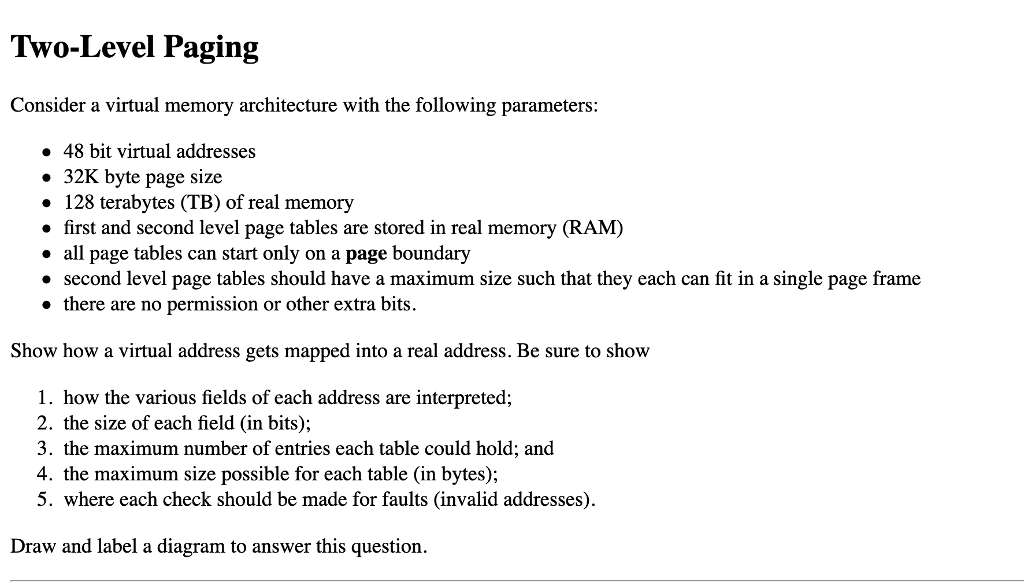Answered step by step
Verified Expert Solution
Question
1 Approved Answer
Question: Solution: I need a detailed explanation of the solution. How was the calculation done? How do you get the Page high and page low?
Question:

Solution:

I need a detailed explanation of the solution. How was the calculation done?
How do you get the Page high and page low? What if the virtual memory was not given. What information would we need to find the size of the VM? What are the relations
If the question is modified and some other information is given how can we get the initials numbers needed to find the solution?
Two-Level Paging Consider a virtual memory architecture with the following parameters: 48 bit virtual addresses 32K byte page size 128 terabytes (TB) of real memory first and second level page tables are stored in real memory (RAM) all page tables can start only on a page boundary second level page tables should have a maximum size such that they each can fit in a single page frame there are no permission or other extra bits Show how a virtual address gets mapped into a real address. Be sure to show 1. how the various fields of each address are interpreted; 2. the size of each field (in bits); 3. the maximum number of entries each table could hold; and 4. the maximum size possible for each table (in bytes) 5. where each check should be made for faults (invalid addresses) Draw and label a diagram to answer this question. Two-Level Paging Consider a virtual memory architecture with the following parameters: 48 bit virtual addresses 32K byte page size 128 terabytes (TB) of real memory first and second level page tables are stored in real memory (RAM) all page tables can start only on a page boundary second level page tables should have a maximum size such that they each can fit in a single page frame there are no permission or other extra bits Show how a virtual address gets mapped into a real address. Be sure to show 1. how the various fields of each address are interpreted; 2. the size of each field (in bits); 3. the maximum number of entries each table could hold; and 4. the maximum size possible for each table (in bytes) 5. where each check should be made for faults (invalid addresses) Draw and label a diagram to answer thisStep by Step Solution
There are 3 Steps involved in it
Step: 1

Get Instant Access to Expert-Tailored Solutions
See step-by-step solutions with expert insights and AI powered tools for academic success
Step: 2

Step: 3

Ace Your Homework with AI
Get the answers you need in no time with our AI-driven, step-by-step assistance
Get Started


